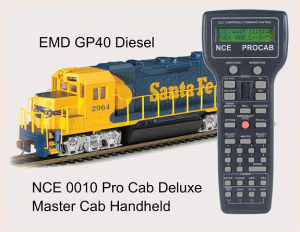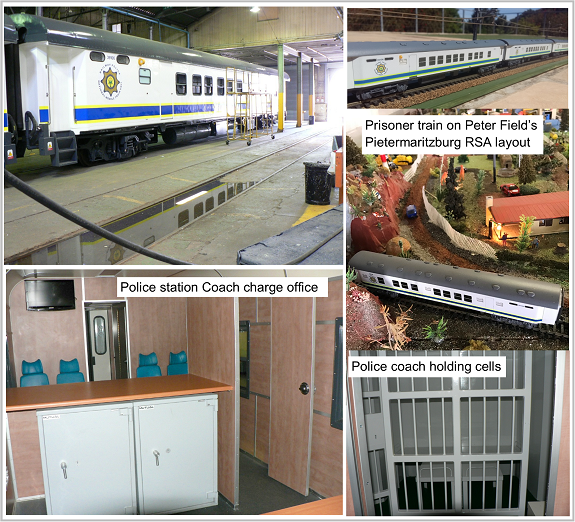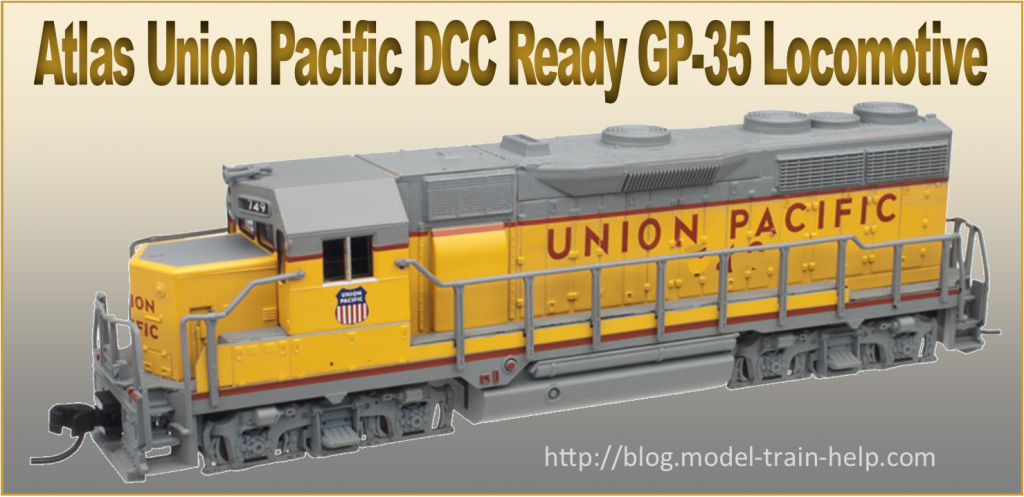Everything on model trains, model railroads, model railways, locomotives, model train layouts, scenery, wiring, DCC and more. Enjoy the world's best hobby... model railroading!
Walthers BNSF GE ES44C4 With Tsunami 1 Decoder
Kim asks:
“I don’t know how to adjust CV’s to my Walther’s HO BNSF GE ES44C4. It needs to be slowed down. It has a Tsunami 1 decoder. How do I find the right CV to reduce speed steps to be matchable to other locomotives?”
Contact the Blog Moderator using the ASK A QUESTION link to have your question or photo published.
How To Make Large Blue Backdrops
Steve models HO and writes:
“I see the large blue backdrops with the curved corners at the ends of the model tables instead of just a sharp corner. I originally thought of just using a piece of 6 mm floor underlayment 4 x 8 foot cut in half lengthwise to 2 foot and screwing these strips on the back of my table. But now I would like to make the taller curved backdrops. Is this material cardboard or what is it made of to make it curve like that Wood without being too stiff and porous? Can you buy these blue backdrops already made and decorated?”
If you would like your question published, make contact with the Blog Moderator by using the ASK A QUESTION link below.
Police Office and Prisoner Cells on South African Trains
Regular contributor Peter Field from South Africa shared these interesting photos and story:
My layout is currently covered due to the transformer speed controller packing up and non-available here in Natal but have sourced two in Cape Town which is being sent up to me.
In 2010 with the World tournament soccer in South Africa, the police commissioned the railways to build I am told about 12 of these mobile charge offices that would be attached to certain passenger trains to convey people and fans between games in RSA. As they were expecting the hooligans to arrive from Europe and England. However, they put these charge offices on quite a few passenger trains operating then.
The charge office comprised of a charge office, counseling room, toilet, shower, and two to three-compartment for 5 to 6 officers who would be on duty for the duration of the journey, and yes 4 small lock-up cells at the rear of the coach with small fanlight windows. After the games, they were stored and recently brought to control crowds in the trains from Corona Virus with distancing, etc.
I have seen them on container trains as well as they are used to guard the containers on route to and from Durban harbor that were being broken into and items stolen.
Here is a picture of a charge office and some interior shots of the office.
My Kiwi (New Zealand) Diesel is doing well here amongst the South African Railways locos on my layout, as it is a lease and lend loco to the SAR fleet. Cheers for now and good running!
If you have a story or layout picture you would like to share, please make contact with the Blog Moderator by using the ASK A QUESTION link below.
Steve Shows The Background He Created
In this video model railroader, Steve shows you how he printed out paper model structures, mounted them to his layout, and built a scene around them. As Steve says, “It was cheap & easy, and the end result is totally awesome!”
Sound on a South African Class 34-200 Diesel
Andre models HO and asks:
“I have a single South African Railways Class 34-200 diesel with no sound. The sound clips available are for the GE 16 cylinder 2-stroke types of diesel. The 34-200 is based on the GM-EMD GT26MC 16 cylinder 2-stroke, and it is possible to hear the difference the two engines produce. It would. therefore, be technically incorrect to load the GE sound onto the 34-200. Is there anyone out there who knows where to buy sound clips for start-up, idling, accelerating, compressed air blow-down, the full spectrum of the sounds coming from GM-EMD GT26MC?”
Add your suggestion below to assist Andre.
Power Controllers
Frank writes:
“I need more Amps to run all my HO trains. I use a computer power pack puts out 6 amps 18 volts, run through a transformer with power unit removed. Is there a better way to achieve 16 volts max and 10 amps? Any ideas would be appreciated.”
Sanding Rails – Good or Bad Idea?
Neil posted this question:
“I just watched a video on how to spray the track with Earth Brown paint. The dried paint on the top of the rails was then sanded with #2 sandpaper. Sanding rails didn’t seem smart to me? Has anyone done this, or am I worried about nothing?”
Get your question published on the Model Train Help Blog. Use one of the ASK A QUESTION links to submit your question for review by the Blog Moderator.
Athearn SD40 on 18 Inch Curve Track
Gordon asks:
“Will an Athearn SD40 run ok around an 18″ radius track? I have 22″ curves on my HO layout but plan for an 18″ radius curve. Will it work?”
Have your question published. Use the ASK A QUESTION link below.
NCE 0010 Pro Cab Deluxe Master Cab Handheld Remote and Bachmann 66801 HO Scale EMD GP38 2 DCC Santa Fe
 Newbie Martin is looking at HO scale and asks:
Newbie Martin is looking at HO scale and asks:
“Just starting off I will build two tracks code 100 seems the most commonly available? I like the look of the Bachmann 66801 HO Scale EMD GP38 2 DCC Santa Fe, so might make it my first engine. Tell me if there’s something more suitable.
My plan is to operate DCC for engines, accessories, lighting, etc. I presume a wireless throttle is the way to go? I haven’t committed to buy anything or any particular make yet, so would appreciate any suggestions? I noticed several ads for the NCE Pro Cab – any good? A lot of questions I know, but I am just trying to get my head around things before committing.”
Add your own comment or suggestion to assist Martin with his project. See the COMMENTS link below.
Is 2ft x 4ft Feasible for a WORKABLE N Scale Layout?
Darryl asks:
“I showed a photo of my old HO layout to my 7-year-old grandson who seemed interested. I thought of building a small N scale layout together. I only have a space of around 2×4 and want to know if that is too small for a WORKABLE track? I don’t want to downsize the scale, N scale will be small enough for my old eyes.”
Darryl, Tony Neilson’s N Scale Track Plans Ebook features several 2ft x 3ft, and 2ft x 4ft track plans.
To have your own question published on the blog, you can submit it via one of the ASK A QUESTION links on the blog.
64 Unique Plans Now Available In The Residential Category
Terraced houses, suburban houses, city apartments… you name it, and you are likely to find the plan you are looking for in the RESIDENTIAL CATEGORY at https://www.modelbuildings.org/residential
There are plans based on a variety of residential styles from around the globe including USA, Canada, UK, Australia, New Zealand, and other countries. Each plan can be purchased separately, or in discounted special buy packs to download, print, and built to HO scale, OO (UK), and N scale.
The latest catalog (version 8.0) is also available for download for FREE here https://www.modelbuildings.org/catalog
Designing a Layout With Bachmann EZ Track
Roy asks:
“I am building an HO scale Layout using Bachmann EZ track. I have a question I am adding a train station to my layout. The tracks for my station will come off the main track line via a switch then go the length of the passenger station stop the hook back to the mainline via another switch. My question is do I use EZ track for my station stop tracks or use regular tracks that same track code without the attached roadbed and just ballast over the track? Also, do I use EZ track switches or regular track switches without attached roadbed to divert passenger train in and out of the passenger train station from the main track line that has EZ track?”
Post your suggestions using the COMMENTS link. If you have a question you would like to have published, then please use the ASK A QUESTION link.
Lionel Pennsylvania Flier O Scale Train Set With Fastrack Inner Loop
David writes:
“I purchased the Lionel Pennsylvania Flyer O Scale train set that comes with a DC wall-pack power supply. I have no trouble operating the set. I then purchased the FasTrack Inner Loop add-on and incorporated it into the oval layout from the original Lionel Flyer and the train won’t run. Do I need to purchase an AC transformer to be able to use the Inner Loop add-on?”
Mixing OO, S, and HO Scale Scenery Elements
John posted this question:
“I have an S gauge 1:64 train/track layout. Can I mix and match various gauges such as OO, HO and S interchangeably in my scenery? There are more OO and HO gauge buildings to choose from in the market and to me, I do believe it is ok if it simply looks authentic … what are your thoughts? Thank You”
Layout Software
Frederick asks:
“Do you or any members have a recommendation for computer software for track layout? If there is some free stuff that’s good. “
Atlas Union Pacific DCC Ready GP-35 Loco
Reynold models N scale and asks:
“I wanted the DCC Ready Atlas GP35 loco in Union Pacific markings, but have just found out it wasn’t around until the 1960s. My layout… half-finished… will be set in the mid to late 50s, so I’m probably better with something a little older. I don’t need Union Pacific if that opens more options. Any ideas?”
Add your comments to this post – see COMMENTS below, or have your own question published – see ASK A QUESTION below.
Sound or No Sound… That is the question
“What do people think about DCC sound? The obvious price difference is not the only reason I ask. From what I’ve seen and heard, the car/wheel track noise seems to negate the engine sound effects. Winding up the volume is an option, but that exaggerates the sounds to a less realistic level. Am I overthinking this? Thoughts.”
ASK A QUESTION or post your COMMENTS below.
Track Attached to Plywood or Cork?
Clint writes:
“Before attaching my track directly to ply should I lay down cork first? What should I use – track tacks/nails, or glue what type?”
Add your comments below. And, remember you can have your question published too. See the ASK A QUESTION link below.

















